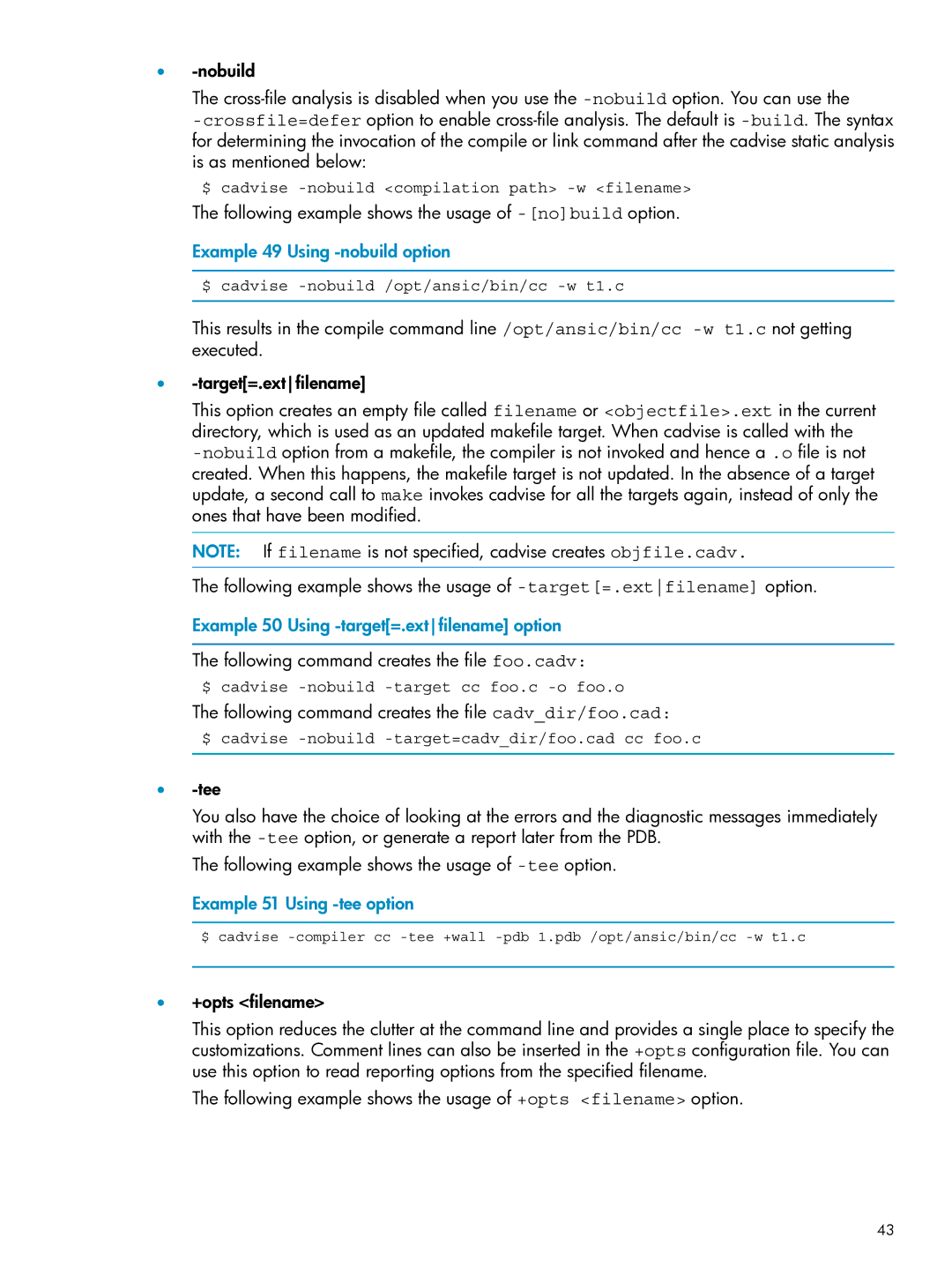
•
The
$ cadvise
The following example shows the usage of -[no]build option.
Example 49 Using -nobuild option
$ cadvise
This results in the compile command line /opt/ansic/bin/cc
•
This option creates an empty file called filename or <objectfile>.ext in the current directory, which is used as an updated makefile target. When cadvise is called with the
NOTE: If filename is not specified, cadvise creates objfile.cadv.
The following example shows the usage of
The following command creates the file foo.cadv:
$ cadvise
The following command creates the file cadv_dir/foo.cad:
$ cadvise
•
You also have the choice of looking at the errors and the diagnostic messages immediately with the
The following example shows the usage of
Example 51 Using -tee option
$ cadvise
•+opts <filename>
This option reduces the clutter at the command line and provides a single place to specify the customizations. Comment lines can also be inserted in the +opts configuration file. You can use this option to read reporting options from the specified filename.
The following example shows the usage of +opts <filename> option.
43
